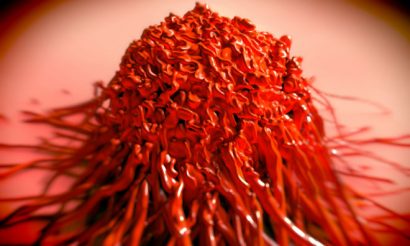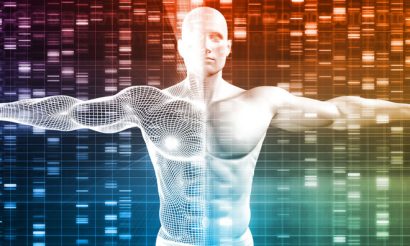Democratising the Data-Driven Medicine revolution
Posted: 7 November 2016 | | No comments yet
Sophia Genetics’ CEO Jurgi Camblong says genomic data can now diagnose and tailor individual treatments but how do we democratise Data-Driven Medicine?


The Data-Driven Medicine revolution is under way. Every day, hospitals and laboratories across the world produce and analyse genomic data from patients with chronic conditions, or at risk of developing them, to diagnose, manage treatment and prevent further damage.


Next Generation DNA Sequencing (NGS) has eased and accelerated the production of patient genomic data, while bringing costs down.
An alternative to this is big data technologies, such as SOPHiA, our artificial intelligence product for Data-Driven Medicine, which are now being used across the globe to crunch this gigantic amount of very complex patient data, cross-reference available knowledge on genomic alterations and continuously learn from thousands of patients’ genomic profiles and experts’ knowledge to improve patients’ diagnostics and treatments.
Taken together, those two advances now allow clinicians to swiftly match the unique genomic profile of patients’ disease with actionable information on available treatments and eventually relevant clinical trials; enabling clinicians to treat the causes of a disease rather than its consequences.
Now the key question becomes: how to democratise Data-Driven Medicine?
The answer certainly lies into continuing to grow the number of hospitals and labs connected on a genomic analytical platform to increase the mass of raw data and cases that big data technologies can analyse to better spot the tell-tale signs of hereditary diseases and other illnesses in patient genomes.
Think about self-driving cars. They learn when different users take different roads and the machine finds a way to adapt to all those variables. Not by taking the same itinerary every day. The same applies to Data-Driven Medicine.
The more cases and genomic information are analysed by artificial intelligence, the smarter they will get as they learn from crowd-sourced knowledge along the way.
Precision medicine initiative
This was actually described by Barack Obama in his 2016 remarks for the launch of the Precision Medicine Initiative in the US, where he identified the followings as the necessary steps to the democratisation of Data-Driven Medicine:
- CONNECT hospitals and healthcare actors within a community
- POOL patient genome profiles data and medical records within this community
- SHARE clinical knowledge of patient cases amongst the members of the community
- LEVERAGE big data technologies to turn that data into actionable insights
President Obama participates in a panel discussion moderated by Dr. James Hamblin of The Atlantic on the importance of PMI at the White House, February 25, 2016.
“Doctors have always recognised that every patient is unique, and doctors have always tried to tailor their treatments as best they can to individuals. You can match a blood transfusion to a blood type — that was an important discovery. What if matching a cancer cure to our genetic code was just as easy, just as standard? What if figuring out the right dose of medicine was as simple as taking our temperature?” – President Obama, 2015
To sum-up, the solution to democratise Data-Driven Medicine lies in the creation of a collective intelligence which is the sum of clinicians’ expertise and knowledge.
Unlocking AI potential
This is particularly important because even if 200 patients already benefit from Data-Driven Medicine every day, as far as Sophia Genetics is concerned, we have so far unlocked only 50% of this revolution potential.
Although AI technologies get a huge traction and we are seeing an increasing number of hospitals joining the community to share data every month to diagnose more and more patients, we actually see the glass as only half full.


Data driven technology could easily diagnose tumour type and stage of development
In fact, despite these achievements, fully democratising Data-Driven Medicine requires to capture additional information such as: the tumour types patients are suffering from, tumours’ stage, therapies that were given to patients and information about their success or failure. Phenotypic data, as opposed to genomic data, is key to completing the picture obtained when analysing patients’ genomic profiles.
Real time epidemiology
Access to that data would make us enter a new era of real-time epidemiology. An era where life is a giant clinical trial and the information of a patient in Boston will help better diagnose and treat a patient in Paris.
An era where we will be able to say that one particular patient’s cancer is identical to that of 10,000 other patients, who had received treatment plan A and survived.


Scientists hope to use genomic data to diagnose tumour treatment
When used wisely, the insights gleamed can bring order and efficiency to personalised care and bring to patients tailored care options that respond to their unique genetic make-up.
Cheaper and faster
The identification of patients’ genomic mutations presents an opportunity not only to diagnose them more easily, efficiently and quickly, but also to identify which drugs are most efficient for which genomic profiles, and finally ensure that the patients benefit from tailored treatments.
Lower cost and more accurate high-speed methods for sequencing and analysing patients’ genomic profiles have given us the tools to better diagnose patients.
It is high time we leverage additional phenotypic data to expedite the time for providing new treatment options to the patients most likely to benefit.




